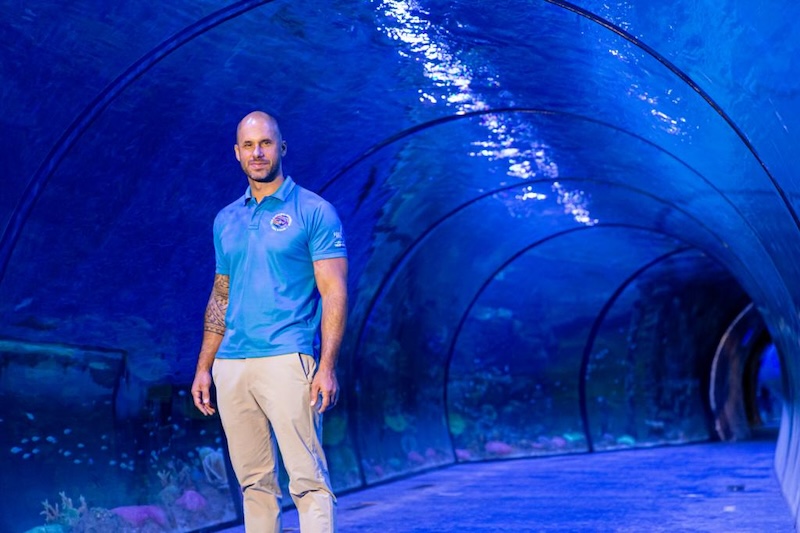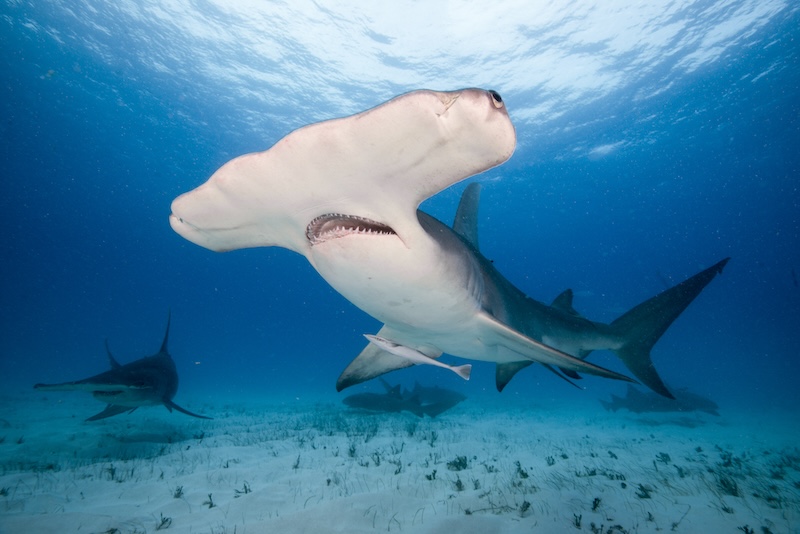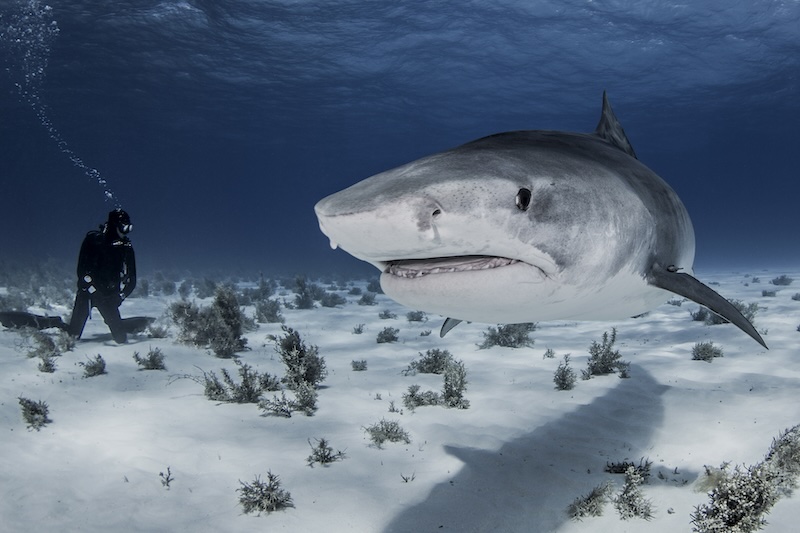Sharks in the UAE: do they pose a danger to humans?
Sorting the honest tooth from the great white fibs…
Sharks have been around in some form or another for the past 450 million years, which makes them roughly twice as old as the earliest dinosaurs. Gills for the Darwinian win. Fast forward to the modern era though, and they’re facing a bit of an image crisis in the eyes of humans. It’s likely the evolutionary hangover of perennial apex predator fear still lodged in our primal brains, and the terror of what lies in the cold dark unknown, stoked by the gnashing anti-shark PR machine of Hollywood and its torrent of menacingly-finned antagonists – The Meg, Deep Blue Sea, The Shallows, incredibly six whole Sharknado movies (although in fairness tornados are equally to blame here), and what feels like 15 Jaws sequels. But, with the recent spate of unconfirmed sightings off the coast of the UAE, how safe is it to “go back into the water”? We spoke to the UAE’s own resident shark whisperer, conservationist and font of all fishy knowledge – Paul Hamilton, General Manager of The National Aquarium, to find out…

What species of shark are present in the Arabian Gulf, and do any of them pose a threat to humans?
There are 32 known species of sharks present in the Arabian Gulf. This includes some of the most infamous species such as bull sharks and tiger sharks (ed: two of the three species most commonly involved in unprovoked attacks globally). It is a popular belief that there are no sharks here, which is incorrect. There are healthy populations of various shark species in the Arabian Gulf, however interactions between sharks and people are extremely rare in this environment.

Great hammerhead shark
Do any of these species often visit the shallow areas along the coastline?
The sharks of the Arabian Gulf will adjust their habits depending on the season. For a lot of the year the shallow water is very hot and with high salinity, during these times most shark species will remain deep. In the Arabian Gulf the most abundant food sources for sharks are not on the coastal beaches and this is why we almost never see them as swimmers. The sharks tend to be offshore in channels, around islands and on the sea grass flats.
During the cooler months more marine life can access shallow waterways and beaches and are therefore more likely to be seen by people. More people are outdoors during this time which also increases the likelihood for sightings.
What are the species that have been reportedly spotted recently near the coast in the UAE?
Recently we have seen reports of lemon sharks, bull sharks and some small requiem sharks gathering in schools, almost certainly due to food interest and breeding activity. For example, recent sightings of small schooling sharks under a bridge at Palm Jumeriah could be explained by the lighting under the bridge attracting zooplankton, which attracts squid, which attracts sharks. Regardless of the reason, there are no sharks taking any interest in humans here and this is why the record of negative incidents between sharks and people in the UAE is near zero.

Bull shark
The Arabian Gulf is a very high-nutrient environment, and this is why the water is cloudy. In comparison the Red Sea is low in nutrients and that is why the water is so clear and this can change the way sharks behave. Sharks in the Arabian Gulf have abundant food sources and these food sources are typically offshore, away from people.
Should we be afraid of sharks?
After the incident in Egypt (ed: a fatal tiger shark attack in June, 2023) this region has certainly been more sensitive to the shark topic. It was a tragedy, however, at the same time it was also very much an isolated incident. There is a long list of statistics we can use to help people understand how unlikely a shark attack is, but I think the general public in 2024 do understand the important role sharks play in our oceans and the slim chance one would have for an encounter. For me personally I love to see sharks, I was recently diving with 5m Tiger Sharks in the Indian Ocean, and it was one of the most awe-inspiring moments of my life.

Tiger shark
Some of the best information coming out now is through drone videos. We are now able to see how sharks behave around unaware swimmers and surfers. It is really incredible how little attention a sharks pay towards a human. In fact, what we mostly see is avoidance behavior by the shark, taking the longer route around people out of fear of us. The people in the videos are not shark experts like you see on TV, just regular people going about their day. I don’t want to give other animals a bad rep, but certainly bears, hippos, crocodiles and many other creatures would be more likely to react aggressively to the sight of a human than sharks. Drone footage really demonstrates how sharks behave around us and it is very reassuring. Anyone can search for these videos online to see for themselves.
Can you tell us about any of the conservation projects currently underway in the UAE and what can people do to help support them?

Lemon shark
Save Our Seas specializes in shark conservation here and around the world. It’s a great platform saveourseas.com. Sharks in general are in crisis with many species on the verge of population collapse. We do not know what the knock-on effect would exactly be if we lose sharks in our oceans, but we expect it would affect many other loved species and world food sources through fisheries. The U.A.E is lucky to have sharks with us and what is most important is we learn how to keep them around.
What are your top three shark facts?
- Sharks sink…if they are not swimming, they will fall to the sea floor.
- A shark’s huge liver is the reason they can go long lengths of time without food. It’s like having two giant batteries onboard.
- Sharks are fish, the only difference is that their skeletons are made of cartilage and not solid bone. That’s why they move in such a fast and effortless way.
For more information and safe, up-close interactions with The Gulf’s native shark species, head to The National Aquarium, Al Qana, Abu Dhabi, tickets from Dhs110. thenationalaquarium.ae
Images: Getty
